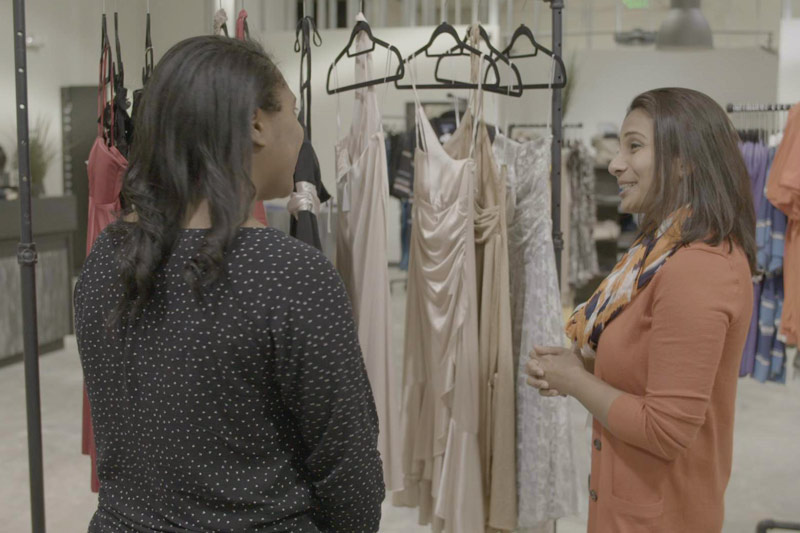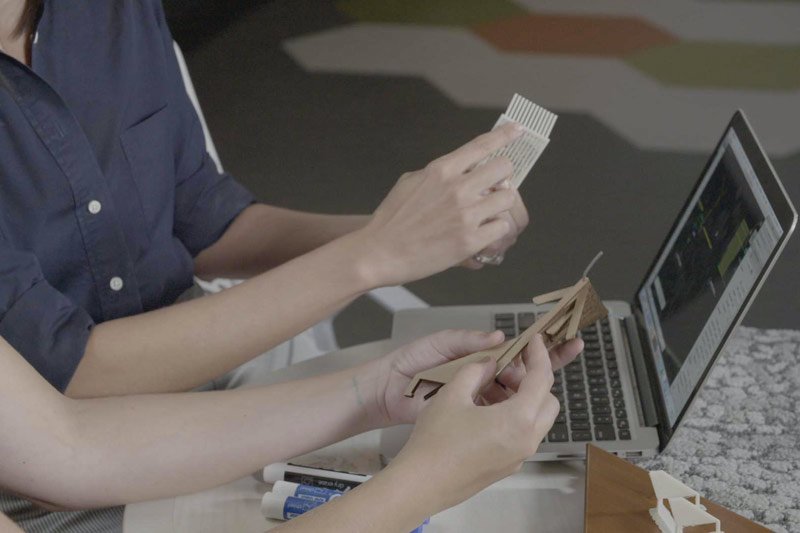Auburn human scientists find answers with human-technology interface
Amy Weaver | Office of Communications and Marketing
Stephen Hawking could be the best example of the human-technology interface.
The renowned theoretical physicist, who has been confined to a wheelchair since the late 1960s, communicates through a speech-generating device/computer on his wheelchair. His eyeglasses contain an infrared switch that detects his cheek movements, which allow him to manipulate a cursor and operate a visual keyboard on the computer screen.
Researchers in the Department of Consumer and Design Sciences in the College of Human Sciences are seeking solutions with the human-technology interface to understand how humans comprehend, interact, and use the world around them.
Decision-making in the Digital Age
Professor Veena Chattaraman wants to help consumers make smarter decisions. It seems simple enough, but it really is not, as there is a widening ‘information-time gap.’ “People have access to increasing amounts of information literally at their fingertips, however, they have less and less time to process that information and reach a decision,” she said.
Rather than make poor uninformed or desperate decisions, Chattaraman has found a solution: the use of mobile decision aids or MoDA. The application is meant to help consumers make efficient decisions that best suit their needs.
Chattaraman said MoDA is intelligent and retrieves information for the consumer’s decision-making process based on what they want from the product they are seeking. It will not overwhelm the consumer with information, but rather use information from sources such as customer reviews and manufacturer’s specifications to allow the consumer to make an accurate decision.
“Ultimately they’re making the decision, but MoDA augments the natural way in which they make it by providing an intelligent retrieval of information and supporting their preferred decision-making strategy,” she said. “Your strategy will vary by the type of product you’re looking for. For instance, if you’re buying insurance, you’re probably considering a lot more variables than if you’re buying oranges.
“MoDA captures that through spoken language and is able to tailor the decision strategy to you.”
MoDA uses conversation protocols—as people interact with it—to infer how they are thinking about the decision. This ability makes MoDA more usable to those who want to make decisions on-the-go and in multi-task situations.
Chattaraman’s research is funded by a three-year grant from the Cyber-Human Systems program at the National Science Foundation. A mock retail space in Auburn’s Radio Frequency Identification Lab, or RFID, provides an environment for her research team to examine and capture decision dialogue from consumers.
“We’ll have consumers talk through a decision so we know what different steps they follow,” Chattaraman said. “We can use that to train MoDA to be able to understand that type of conversation and respond intelligently.”
“MoDA makes an important paradigm shift in decision aids—from predicting choice to predicting process,” she added.
Once MoDA is developed and can be tested by the team in the RFID lab, Chattaraman said they will compare to see if MoDA is more or less effective than a human sales associate in being able to help the consumer reach a satisfactory decision.
Urban Furniture in the Digital Age
Assistant Professor Melanie Duffey became interested in studying public space users’ behaviors as a response to claims questioning the importance of physical public spaces within the digital age.
She plans to demonstrate how integrated technology might also be used to enhance or repurpose vacant and/or under-utilized public spaces using moveable urban furniture with digital charging capabilities, with the hope to integrate sensors and other tech devices in the future.
Duffey said she found people would embrace public spaces with free Wi-Fi, even standing in an odd or non-traditional location—like the coffee shop parking lot—because the signal strength was stronger. After over 100 hours of human observation of behaviors in urban public space that offer free Wi-Fi, a six-item criteria was created to evaluate the usefulness of outdoor urban furniture in such spaces.
“So we created a criteria that would be important to a Wi-Fi user in public space and decided to look at ways of designing a form of urban furniture that would help enhance an under-utilized space that might offer Wi-Fi,” she said.
On Auburn’s campus, where Wi-Fi is readily available, Duffey said she and graduate student Suzanne Merlino wanted to develop portable furniture for the knee walls around campus. People already sit on them, but many areas lack shade and back support. Duffey and Merlino were curious if students would sit longer and use them more if they were able to charge their phone or other devices.
Such furniture—that was easy to manufacturer, relatively low cost, and of modular construction in order to ship flat—could have uses in rural communities or even disaster areas—if it were to be able to integrate more technology.
“In light of a natural disaster like a hurricane, we could create an urban seat that helps people charge their phones through solar energy,” Duffey said. “After Hurricane Sandy, public spaces had Wi-Fi before apartment complexes did so people were going to these spaces to check their email or to work. But these spaces weren’t fitted out with outlets to charge devices. That’s how this project became of interest.”
The end result is a portable chair with solar capabilities for device charging. From testing it on the Haley Concourse this spring, the team received feedback on usability, aesthetics, comfort, and future use. Survey results indicated students generally enjoyed using the chair, but its design could be modified to enhance its appeal.
Apparel Design in the Digital Age
Assistant Professor Sarina Sun is studying how apparel designers react to the different technology interfaces, such as 3D computer-assisted design programs, and devices related to such applications, like 3D body scanning technology.
So far in her research, Sun said she has found there to be a steep learning curve for traditional apparel designers to adapt to the 3D virtual design environment as they are more visual minded, compared to the abstract minded engineers.
“Some of the challenges are in the way we are accustomed to think about and react to designs, forms, surfaces, and shapes, both 2D and 3D,” she explained. “We often are more hands-on in our traditional training and practices, where we rely on tactile sensation and haptic manipulation.
“However, in the virtual environment, we need to convert what we already know in the physical world into new digital actions using keyboard, mouse, and software commands. This mental process essentially involves the way we apply spatial visualization skills, in which the ‘mind’s eye’ is able to visualize and manipulate an object without executing the change in the physical world.”
Many designers are emerging as self-taught, influenced by the popularity of the maker movement, and are entering different roles in different industries traditionally only available to experts. Sun said this is likely a reflection of how quickly the digital fabrication technologies are saturating our society and how much more accessible and user friendly they are becoming.
Another part of Sun’s research involves the use of digital fabrication methods to overcome current challenges in apparel and textile supply chain.
In various circumstances, she said the fashion supply chain may be challenged with providing products with shorter lead time and customized fit or feature with lower investment or higher return on investment. Often design/manufacturer firms are also challenged with providing sustainable solutions in design workflow and manufacturing social and economic compliance, especially when sourced globally.
“Innovative manufacturing technology would allow for a much shorter lead time and more diversities in the business model, leading to economic vitality,” said Sun. “Domestically, the effective use of digital fabrication methods may allow a small company to develop, market, and maintain a business using a unique model that takes advantage of local labor, supplies, and technology services.
For the young researcher, it’s clear that “various digital fabrication technologies are allowing more people to design, make, and use in more dynamic and customized ways.”



